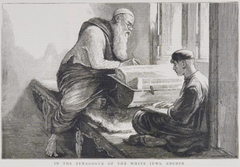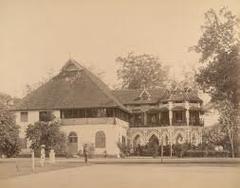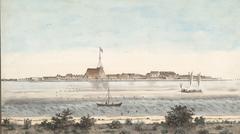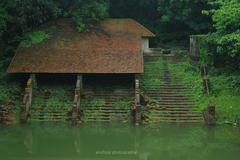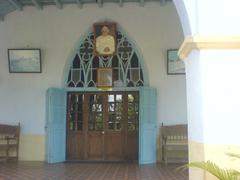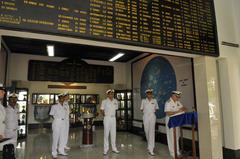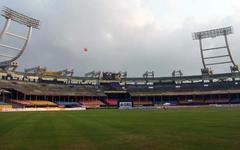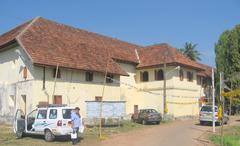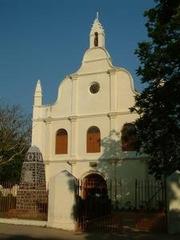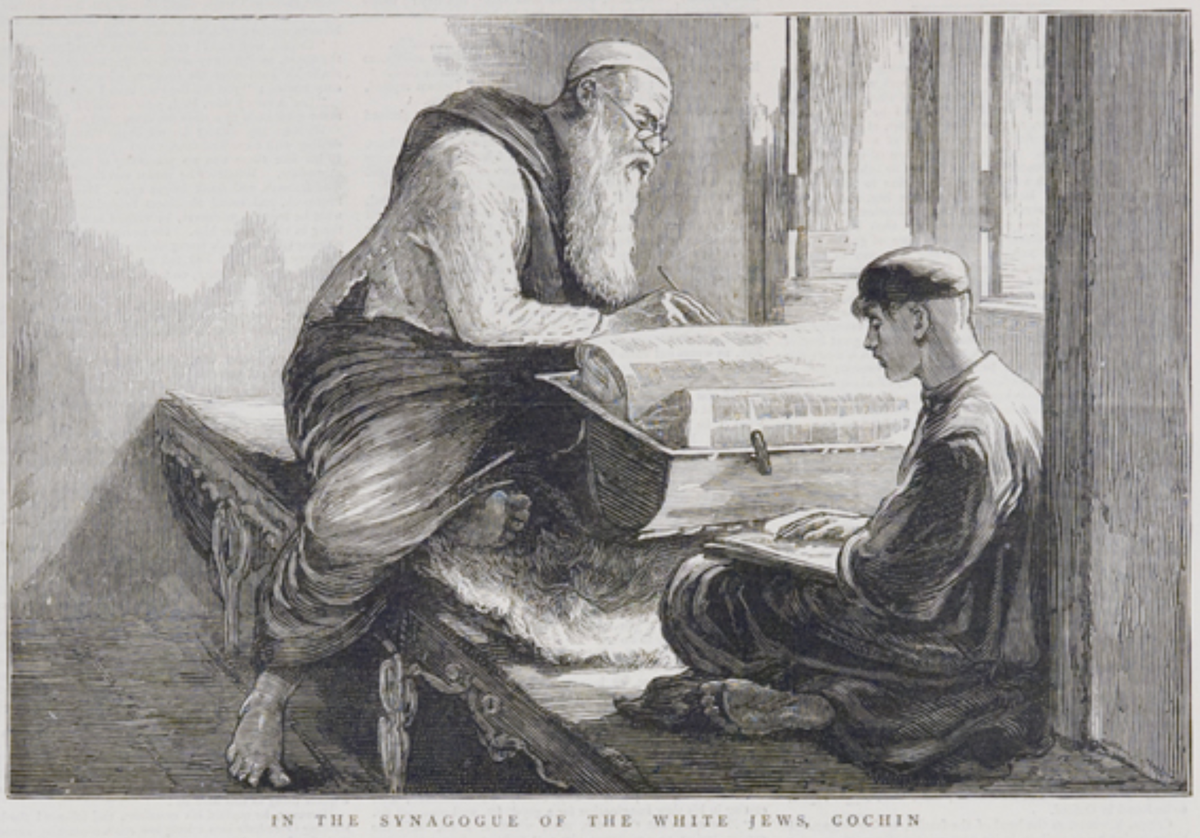
Paradesi Synagogue Kochi: Visiting Hours, Tickets, and Comprehensive Guide
Date: 14/06/2025
Introduction
The Paradesi Synagogue, located in the historic Jew Town of Mattancherry, Kochi, Kerala, is a remarkable testament to centuries of multicultural coexistence and Jewish heritage in India. Established in 1568 CE, it is recognized as the oldest functioning synagogue in India and the entire Commonwealth of Nations. This architectural and cultural landmark has drawn visitors from across the globe, offering a window into the vibrant Cochin Jewish community and the wider tapestry of Kerala’s pluralistic society.
This detailed guide explores the synagogue’s historical background, architectural features, cultural importance, and provides all essential visitor information—including updated visiting hours, ticketing, accessibility, etiquette, and tips for an enriching experience. Whether you are a history enthusiast, architecture admirer, or a curious traveler, the Paradesi Synagogue is a must-visit among Kochi’s historical sites.
Table of Contents
- Historical Overview
- Architectural Highlights
- Cultural and Religious Significance
- Visitor Information
- Frequently Asked Questions (FAQ)
- Visuals and Media Recommendations
- Summary and Practical Tips
- Sources and Further Reading
Historical Overview
Foundation and Early Jewish Settlements
The Paradesi Synagogue stands as a legacy of the Jewish diaspora’s enduring presence in Kerala, which dates back nearly two millennia. Early Jewish communities, often referred to as Malabari Jews, reportedly arrived in Kerala following the destruction of the Second Temple in Jerusalem in 70 CE. Over the centuries, Kochi became a sanctuary for Jews fleeing persecution in Europe and the Middle East, notably after expulsions from Spain and Portugal during the Inquisition (Britannica; Plan Ashley Go).
The synagogue was founded on land granted by King Bhaskara Ravi Varma of Kochi, symbolizing the goodwill between the local rulers and the Jewish community. The term “Paradesi,” meaning “foreigner,” points to its role as a congregation point for Sephardic and Middle Eastern Jews who joined the existing Malabari Jewish community.
Community Evolution and Key Events
Throughout its history, the Paradesi Synagogue has endured and thrived through periods of prosperity, persecution, and restoration. Notable milestones include:
- Destruction and Restoration: The synagogue suffered damage during the Portuguese Inquisition in 1662 but was promptly restored under Dutch rule in 1665, ushering in a new era of security and prosperity.
- Copper Plates of Privilege: Among its prized possessions are ancient copper plates inscribed in Tamil, which granted the Jewish community autonomy and rights from the local raja. These plates remain a rare testament to religious tolerance and coexistence in Kerala (Britannica).
- Diaspora and Modern Decline: The Jewish population in Kochi peaked at around 3,000 in the mid-20th century but has since declined due to emigration, especially after the formation of Israel in 1948. Today, a small but devoted community continues to uphold traditions at the synagogue (30 Stades).
Architectural Highlights
Exterior and Clock Tower
The Paradesi Synagogue’s exterior showcases a harmonious blend of Kerala and colonial European styles. Its whitewashed façade is modest yet elegant, standing out amidst the bustling lanes of Jew Town. The iconic Dutch-style clock tower, constructed in 1761 by Ezekiel Rahabi, is a signature feature—its four faces display numerals in Hebrew, Roman, Malayalam, and Arabic, reflecting the synagogue’s cosmopolitan heritage (Plan Ashley Go; The Hindu).
Sanctuary and Interior Artifacts
The prayer hall is a single-story rectangular space, divided into sections for men and women, with the women’s gallery accessible via a wooden staircase and separated by ornately carved screens (Atlas Obscura). The central bimah (platform) is octagonal and made of brass, from which the Torah is read. The ark (Aron Kodesh) is crafted from teak, adorned with mother-of-pearl and gold leaf.
The flooring is an extraordinary feature—over 1,100 hand-painted blue-and-white porcelain tiles imported from Canton, China, each tile unique. Belgian crystal chandeliers illuminate the hall, while the ceiling features pastel hues and wooden beams. Other notable artifacts include:
- Torah Scrolls encased in gold and silver
- Haile Selassie’s Rug, a gift from the Ethiopian emperor
- Gold Crowns donated by patrons
- Oil Lamps with brass pulleys for festivals
Commemorative plaques, Hebrew inscriptions, and memorial tablets further narrate the synagogue’s rich history.
Cultural and Religious Significance
The Paradesi Synagogue is both a place of worship and a living museum, preserving centuries-old traditions and artifacts. It symbolizes Kerala’s ethos of religious harmony, standing alongside Hindu temples and Christian churches. The copper plates, Torah scrolls, and distinctive architectural elements bear witness to the community’s resilience and the region’s pluralism (Medium).
Visitor Information
Location and Access
- Address: Jew Town Road, Mattancherry, Kochi, Kerala, India
- Proximity: Adjacent to Mattancherry Palace, near spice markets and antique shops (Kerala Tourism)
- Getting There: Easily accessible by taxi, auto-rickshaw, or on foot. Private vehicles or hired cabs are recommended, especially during peak seasons (ExploreBees).
Visiting Hours and Tickets
- General Hours: 10:00 AM – 12:00 Noon and 3:00 PM – 5:00 PM
- Closed: Fridays, Saturdays, and Jewish holidays (Irish Holidays; Trans India Travels)
- Tickets: ₹5 per person (adults and children); no additional charge for foreign tourists (Yometro)
Tips:
- Check official sources or local tourism offices for current timings and ticket information, as they may change due to festivals or maintenance (Kochi Signal).
- Special event tickets may apply during Jewish festivals.
Etiquette and Guidelines
- Dress Code: Modest attire required; shoulders and knees covered. No shorts or sleeveless tops.
- Footwear: Must be removed before entry; racks provided at the entrance.
- Photography: Prohibited inside the main prayer hall. Check with staff for exterior or non-restricted areas.
- Behavior: Maintain silence and reverence, as the synagogue is an active place of worship. Avoid touching religious artifacts and do not bring food or drinks inside.
Accessibility and Facilities
- The synagogue is a historic structure with limited wheelchair access; visitors with mobility challenges should inquire in advance.
- Public restrooms are nearby, but not within the synagogue complex.
- Security checks may be conducted during peak seasons or festivals; avoid bringing large bags.
Guided Tours and Interpretation
- Guided Tours: Highly recommended; book in advance through local tour operators or heritage walk organizers. Self-guided tours are supported by informative plaques in English and Malayalam.
- Interpretation: Heritage walks often include the synagogue and Jew Town, providing broader historical context (Atlas Obscura).
Nearby Attractions
- Mattancherry Palace: Known for Kerala murals and royal artifacts.
- Jewish Cemetery: Features tombstones in Hebrew and Malayalam.
- Santa Cruz Cathedral Basilica & St. Francis Church: Highlighting Kochi’s religious diversity.
- Spice Markets and Antique Shops: Located throughout Jew Town.
- Local Eateries: Serve traditional Kerala cuisine and international fare.
Frequently Asked Questions (FAQ)
Q: What are the Paradesi Synagogue visiting hours?
A: 10:00 AM – 12:00 Noon and 3:00 PM – 5:00 PM; closed on Fridays, Saturdays, and Jewish holidays.
Q: How much is the entry ticket?
A: ₹5 per person; no extra charge for foreign visitors.
Q: Is photography allowed inside?
A: Photography is not permitted inside the main prayer hall; check with staff before photographing elsewhere.
Q: Are guided tours available?
A: Yes, guided tours can be arranged in advance and are highly recommended.
Q: Is the synagogue wheelchair accessible?
A: Accessibility is limited due to the historic structure; visitors with mobility needs should inquire ahead.
Visuals and Media Recommendations
For an enhanced experience, visitors can view high-quality images and virtual tours via official tourism platforms and travel websites. Recommended alt text for images includes “Paradesi Synagogue Kochi architecture,” “Jew Town Kochi heritage site,” and “Paradesi Synagogue visiting hours.”
Summary and Practical Tips
- Plan your visit during the cooler, drier months (November–February) for the most comfortable experience (Trans India Travels).
- Arrive early or late in the afternoon to avoid crowds.
- Dress modestly, remove footwear, and respect the sanctity of the site.
- Consider a guided tour for deeper historical context.
- Explore nearby attractions for a holistic view of Kochi’s multicultural heritage.
The Paradesi Synagogue is not only an architectural marvel but also a vibrant symbol of religious harmony and resilience. Whether you are exploring Kochi’s past or seeking a unique cultural experience, this synagogue will leave a lasting impression.
Sources and Further Reading
- Paradesi Synagogue Kochi: Visiting Hours, Tickets & Historical Guide – Plan Ashley Go
- Paradesi Synagogue – Britannica
- A Fascinating History of India’s Jewish Culture – Medium
- Paradesi Synagogue, Kochi – Kerala Tourism
- The Paradesi Synagogue in Kochi Turns 450 – The Hindu
- Paradesi Synagogue – ExploreBees
- Jewish Synagogue Kochi – Irish Holidays
- Paradesi Synagogue Kochi – Yometro
- Paradesi Synagogue Visitor Tips – Kochi Signal
- Paradesi Synagogue – Trans India Travels
- Jew Town Kochi: Jewish Culture & History – 30 Stades
- Schoolwork Helper: Paradesi Synagogue
- Atlas Obscura: Paradesi Synagogue
- Live History India: The Paradesi Synagogue
For more travel tips and cultural insights, download the Audiala app, follow us on social media, and explore related posts on Kochi’s historical sites and India’s Jewish heritage.
